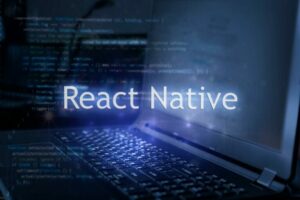Difference between IAAS, PAAS and SAAS
Content
Most SaaS applications can be run directly from a web browser without any downloads or installations required, although some require plugins. SaaS enables users to use and access the cloud provider’s applications that are running on the provider’s infrastructure from thin client or program interfaces. High abstraction PaaS solutions allow you to abstract the entire coding process to boost your application delivery speed, whilst reducing the innovation costs.

A good PaaS solution should provide you with fully managed infrastructure that can scale beyond your current needs. Larger companies may prefer to retain complete control over their applications and infrastructure, but they want to purchase only what they actually consume or need. SaaS provides numerous advantages to employees and companies by greatly reducing the time and money spent on tedious tasks such as installing, managing, and upgrading software. This frees up plenty of time for technical staff to spend on more pressing matters and issues within the organization. Middleware handles the common services and utilities like messaging, API management, data streaming, and authentication. At their heart, these providers promise to separate the task of front-end web development from the job of actually running that code in production.
Related video: What is the cloud-native approach?
The majority of companies have dedicated papers and e-books that discuss this matter in detail — take your time to go through them. Start with taking a look at security documentation of the top cloud providers — AWS, G Suite, Microsoft Azure, Salesforce. You can use these pages as references during your safety research. https://globalcloudteam.com/ We’ll talk about the benefits of using cloud, types of services, choice criteria, and examine the best cloud service providers. Developers only need a PC and an internet connection to start building applications. PaaS providers provide various programming languages for the developers to develop the applications.
- To access the information, a user needs to log in to a personal account.
- One vendor might charge a fixed rate per user based on a limited number of custom integration objects.
- The business benefits add up ‐ the advantages of cost savings, speed of development and security offer real advantages that are hard for businesses to replicate using internal systems.
- PaaS does not typically replace an organization’s entire IT infrastructure; rather, it helps organizations access key services with minimal start-up costs and reduced time to deployment.
- These services are connected and operate together to enable smooth data storage, transfer, processing, deliver content, and power software development.
- Another vendor might charge based on the number and speed of servers and the overall bandwidth used.
- Cloud computing services provide the speed, flexibility, and scalability that allows organizations to develop, innovate, and support IT operations.
As with other cloud services such as infrastructure as a service and software as a service , a PaaS is typically accessed over the internet but can also be deployed on-premises or in a hybrid mode. Because of the shared software development environment, DevOps teams can access all the tools they need from any location. IaaS is a flexible and scalable solution that enterprises can use to create and shrink resources on an as-needed basis. As such, IT administrators can set up and dismantle development and test environments quickly to bring new applications to the market faster.
Why do businesses move to PaaS?
MPaaS typically provides low-code (even simple drag-and-drop) methods for accessing device-specific features including the phone’s camera, microphone, motion sensor and geolocation capabilities. Because PaaS delivers all standard development tools through the GUI online interface, developers can log in from anywhere to collaborate on projects, test new applications, or roll out completed products. Applications are designed and developed right in the PaaS using middleware.

Public cloud computing services are easy to use and navigate; they are highly scalable and accessible. One of the defining qualities of cloud storage is that you only pay for occupied space, computing power, used traffic, and other resources when you were using them. If the business went on hiatus or is pivoting, business owners can pause the support of the servers and cease payments. Kirill has managed a wide range of projects from various business segments and understands the processes that will drive the product to success.
Examples of PaaS
If you’d like to integrate сloud into your custom software or third-party tools, drop a line to our сloud developers and testers. The most powerful example of such cloud solutions is — a robust CRM used to track sales and customer engagement in websites and mobile apps that can even be connected directly to the site. In this scenario, the company doesn’t need to give data away to a third-party provider. An in-house team can manage asset security, increase operations speed, add new functionality, and scale according to the organization’s needs. As soon as the user has access to the account, it’s possible to reach the storage, edit settings, manage data, etc.
We can see public PaaS as a layer between the SaaS and IaaS layers. Private PaaS can be deployed on the organization’s private cloud or on a public IaaS, if need be. The problem with the container orchestration tool Kubernetes is that it is a complex open source technology with a steep learning curve.

In this model, the customer is leasing only the hardware and maintaining the entire software stack in-house, including the operating systems, middleware, runtime, data and applications. pros and cons of paas Common SaaS products include Google Apps, Dropbox, Salesforce, GoToMeeting and Concur. These software products can be accessed through the internet based on a monthly subscription fee.
Learn how the Salesforce Platform leverages PaaS
Building all of this also requires a lot of resources and experts in each of the fields, adding to the overall project cost. Today, Heroku is part of the broader Salesforce Platform of developer tools, supporting a wide range of languages and thousands of developers who run applications on it. In practice, using Heroku involves building on a common runtime deployed in virtualized Linux containers—or dynos, as Heroku calls them—spread across a dyno grid of AWS servers. With a PaaS, developers have limited scope to change their development environment, which can lead to some team members feeling hemmed in. The inability to make changes to the environment or get feature requests deployed by the service provider can lead to companies outgrowing their PaaS and building their own internal developer platform. The underlying infrastructure that applications eventually run on is fully managed by the service provider.

These are extremely beneficial in different niches such as business applications, big data processing and e-commerce. Often, these specialized platforms are divided further into subcategories such as ecommerce-as-a-Service, CMSaaS, BPaaS, DBaaS, and more. PaaS consists of a set of deployment and scaling automation, DevOps and application management tools that can operate On-Prem or even on shared infrastructure. It’s increasingly integrated into business contexts, driving staff productivity and customer engagement. If you are considering PaaS as a solution, make sure it can help you deliver social and mobile apps.
Despite economic turbulence and rising customer expectations, companies remain optimistic about the future. That hope is grounded in plans to invest in immersive CX, which is being driven by five distinct trends. I’ll kickstart this article by defining each one of those cloud instance types, and then I’ll try to give out examples of each type, this way you’ll be able to understand the differences between them.
Business advantage
MWaaS provides a suite of integrations needed to connect front-end client requests to back-end processing or storage functions, enabling organizations to connect complex and disparate applications using APIs. MWaaS is similar in principle to iPaaS in that the focus is on connectivity and integrations. In some cases, MWaaS can include iPaaS capabilities as a subset of MWaaS functions, which can also involve B2B integration, mobile application integration and IoT integration. Companies often use mPaaS for the creation of applications that will provide both internal and customer-facing uses. This implementation can promote a BYOD environment and productivity apps without the requirement of mobile app developers or extra IT support. As with other cloud computing offerings, using PaaS means that developers can get straight to the business of creating without worrying about the administration, maintenance and security issues.
In this circumstance, developers receive the ready-to-use technology stack with full abstraction of infrastructure, platform and application levels. These solutions boost team productivity, performance, as it reduces the need to learn technical skills. General-purpose PaaS platforms offer a “lift and shift” approach to migrate your existing workloads.
Narrowing the work scope down to functional code block makes development easier and faster, especially for complex projects. PaaS vendors frequently provide online communities where the developer can get the ideas to share experiences and seek advice from others. Mindsight is a technology consulting firm that provides thoughtfully-crafted and thoroughly-vetted perspectives to its Chicago area clients’ toughest technology challenges. The as-a-service label has been utilized in every facet of the technological sphere. In fact, there are some within the industry who advocate for an “everything-as-a-service” model, which is simply suggesting that anything can be commoditized – not the most radical statement ever.
Apps Hosting
Also, pay attention to countries — some, like Japan or Germany, are known to be more secure, whereas Russia, for instance, is not the safest option. Your cloud provider should be well-financed and receive steady profits from the infrastructure. If the company shuts down due to monetary issues, your solutions will be in jeopardy, too. In the worst-case scenario, you will have to cease the support of your solutions, or, in a better case, migrate to a new provider, which is an expensive and time-consuming process.
Future of the PaaS market and business model
As an example, the VMware Tanzu Application Platform is expected to provide a suite of highly integrated Kubernetes-based application deployment and infrastructure management tools. This should enable VMware’s cloud-native IT automation products to integrate with the Kubernetes container orchestration platform. It will offer a comprehensive workflow for developers to build apps quickly and test on Kubernetes.
SaaS utilizes the internet to deliver applications, which are managed by a third-party vendor, to its users. A majority of SaaS applications run directly through your web browser, which means they do not require any downloads or installations on the client side. PaaS is a cloud-based computing model that allows development teams to build, test, deploy, manage, update, and scale applications faster and more cost-effectively.






